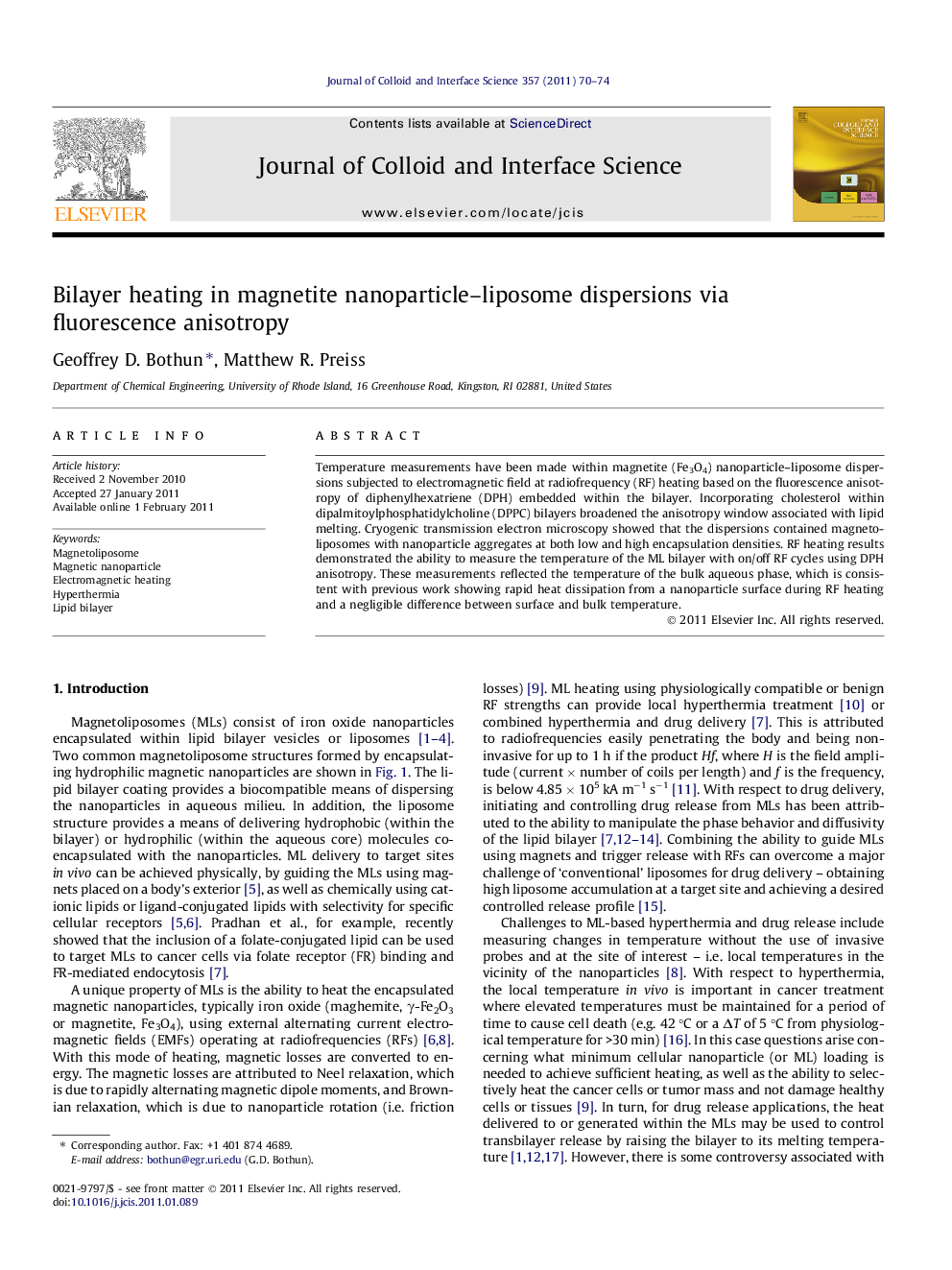| Article ID | Journal | Published Year | Pages | File Type |
|---|---|---|---|---|
| 608548 | Journal of Colloid and Interface Science | 2011 | 5 Pages |
Temperature measurements have been made within magnetite (Fe3O4) nanoparticle–liposome dispersions subjected to electromagnetic field at radiofrequency (RF) heating based on the fluorescence anisotropy of diphenylhexatriene (DPH) embedded within the bilayer. Incorporating cholesterol within dipalmitoylphosphatidylcholine (DPPC) bilayers broadened the anisotropy window associated with lipid melting. Cryogenic transmission electron microscopy showed that the dispersions contained magnetoliposomes with nanoparticle aggregates at both low and high encapsulation densities. RF heating results demonstrated the ability to measure the temperature of the ML bilayer with on/off RF cycles using DPH anisotropy. These measurements reflected the temperature of the bulk aqueous phase, which is consistent with previous work showing rapid heat dissipation from a nanoparticle surface during RF heating and a negligible difference between surface and bulk temperature.
Graphical abstractBilayer-based temperature measurements of magnetoliposomes (liposomes containing encapsulated magnetic nanoparticles) subjected to cycled electromagnetic field heating.Figure optionsDownload full-size imageDownload high-quality image (140 K)Download as PowerPoint slideResearch highlights► Anisotropy measures bilayer heating of magnetoliposomes in an electromagnetic RF field. ► Measurements aided by cholesterol, which broadens the phase transition window. ► Nanoscale heating not observed due to rapid heat dissipation from the nanoparticles into water.
